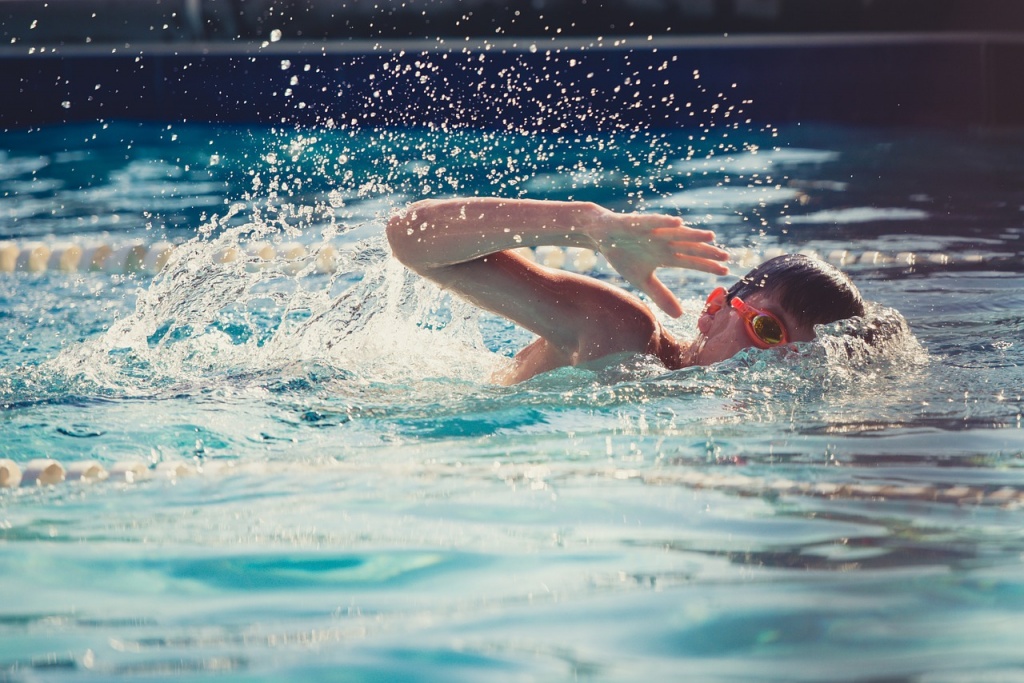
Drowning is the leading cause of injury-related death among children between the ages of 1 and 4. The USA Swimming Foundation reports nearly 90 children younger than 15 drowned in a pool or spa between January and May 2018. Each year about 19 children drown during the July 4 holiday. Preventing unintended, unsupervised access to water is proven to be one of the most effective ways to reduce drowning deaths among young children.
Studies show that although 90 percent of parents say they supervise their children while swimming, many acknowledge that they engage in other distracting activities at the same time. These include talking, eating, reading or taking care of another child.
Even a near-drowning episode can have lifelong consequences. Kids who survive a near-drowning may have brain damage. After four to six minutes under water the damage is usually irreversible.
Parents often encounter warnings about water safety, but drownings still occur. Always be aware and in the moment with your children.
Pool safety tips
Give kids your full attention. Actively supervise children in and around water, without distraction.
Use the Water Watcher strategy. When there are several adults present and children are swimming, use a Water Watcher card to designate an adult as the Water Watcher for a certain amount of time (such as 15 minute periods) to prevent lapses in supervision and give parents a chance to take a break.
Teach kids not to swim alone. Whether you're swimming in a backyard or neighborhood pool, or at the lake or river, teach children to swim with an adult. Older, more experienced swimmers should still swim with a partner every time. From the first time your kids swim, teach them to never go near or in water without an adult present.
Wear life jackets. Always have your child wear a life jacket approved by the U.S. Coast Guard while on boats, around open bodies of water or when participating in water sports. Make sure the life jacket fits snugly.
Learn CPR. Knowing what to do to help a person in distress could save a life.
Avoid pool drains. Teach children to never play or swim near pool drains or suction outlets, which can cause kids to become stuck underwater.
Check the pool first. Be sure to check the pool first anytime a child is missing or unaccounted for. Install barriers around the pool such as a fence and secure gate to keep children out.
Remember other water sources. A person, especially a small child, can drown in any amount of water. Be cautious when children are around water sources such as a wash bucket, bathtub or hot tub.
Pool fencing recommendations
4 feet, 4 sides. The pool fence should be at least 4 feet high and surround the pool, separating it from the house and the rest of the yard.
Climb-proof. The fence shouldn't have any footholds or handholds. Remove objects such as lawn furniture or play equipment the child could use to climb over the fence. Chain-link fences are very easy to climb and are not recommended as pool fences. If they are used, make sure openings are 1.75 inches or smaller in size.
Slat space. To ensure a small child can't squeeze through the fence, make sure vertical slats have no more than 4 inches of space between them. This will help keep small pets safe, too.
Latch height. The fence should have a self-closing and self-latching gate that only opens out, away from the pool area. The latch should be out of a child's reach, at least 54 inches from the ground.
Gate locked, toy-free. When the pool is not in use, make sure the gate is locked. Keep toys out of the pool area when it is not in use.
Alarms
A drowning child is rarely heard. Beyond a fence, additional layers of protection such as pool alarms, door and gate alarms and pool covers can provide some added safety. Make sure alarms are in good shape with fresh batteries. Keep in mind that no alarm is a substitute for a properly installed pool fence.
Pool alarms. Children can drown within seconds, with barely a splash. Swimming pool alarms can detect waves on the water's surface and sound off to attract attention when someone has fallen in.
Gate and house door alarms. Door and gate alarms can be equipped with touchpads to let adults pass through without setting them off. House doors should be locked if a child could get to the pool through them.
Window guards. These can be especially helpful for windows on the side of the house that faces the pool.
Swim lessons
Taking swim lessons cannot drown-proof anyone. But according to a recent policy statement from the American Academy of Pediatrics (AAP), swimming lessons may be beneficial to children between the ages of 1 and 4. The right time to start depends on an individual child’s emotional and physical readiness. Ask your pediatrician for guidance.
Enjoy summer swimming, but be vigilant and follow all safety precautions to keep your little ones safe.
Source: HealthyChildren.org
For additional information on swimming pool and water safety, visit Safe Kids Worldwide.